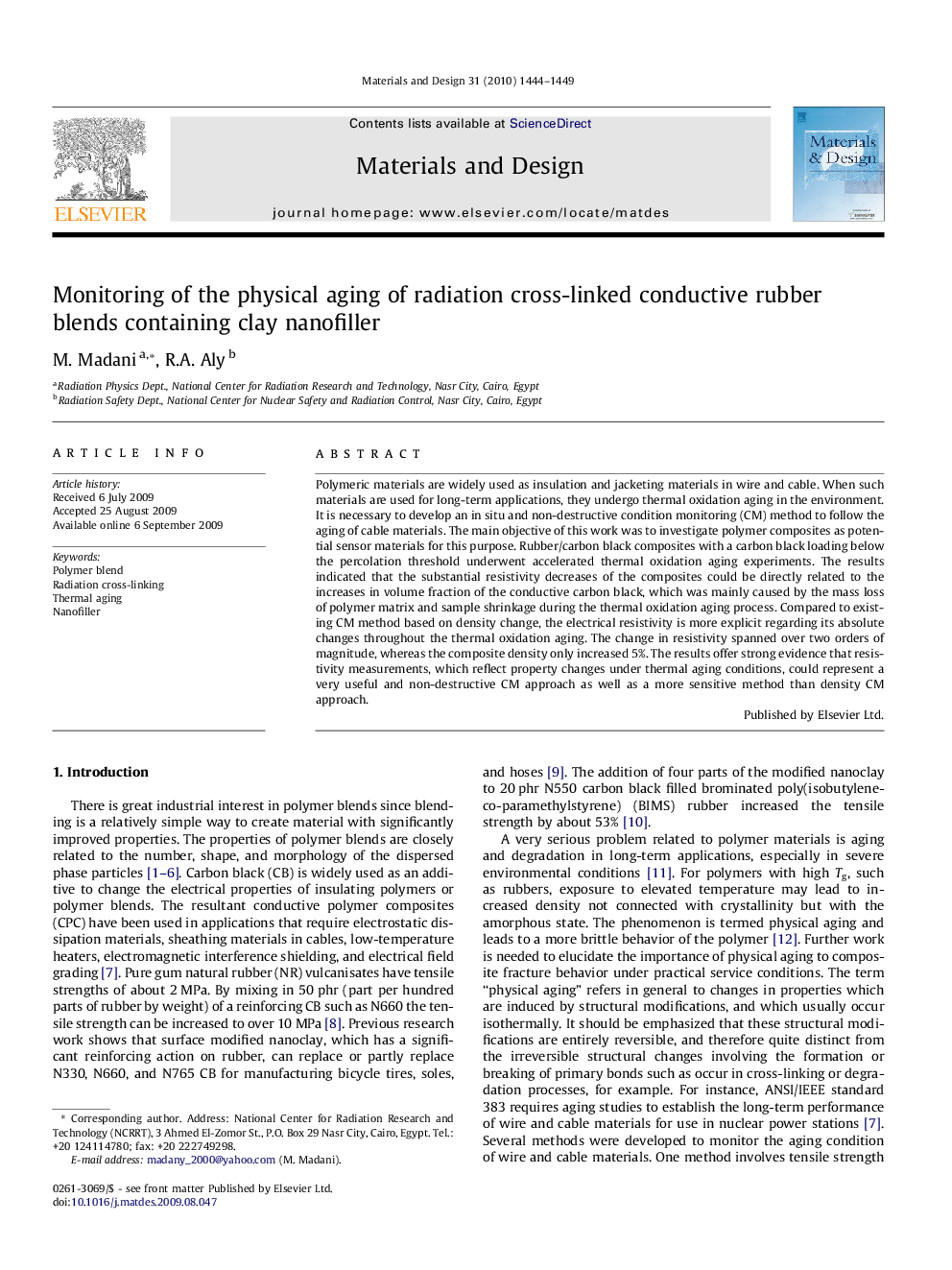| Article ID | Journal | Published Year | Pages | File Type |
|---|---|---|---|---|
| 832514 | Materials & Design (1980-2015) | 2010 | 6 Pages |
Polymeric materials are widely used as insulation and jacketing materials in wire and cable. When such materials are used for long-term applications, they undergo thermal oxidation aging in the environment. It is necessary to develop an in situ and non-destructive condition monitoring (CM) method to follow the aging of cable materials. The main objective of this work was to investigate polymer composites as potential sensor materials for this purpose. Rubber/carbon black composites with a carbon black loading below the percolation threshold underwent accelerated thermal oxidation aging experiments. The results indicated that the substantial resistivity decreases of the composites could be directly related to the increases in volume fraction of the conductive carbon black, which was mainly caused by the mass loss of polymer matrix and sample shrinkage during the thermal oxidation aging process. Compared to existing CM method based on density change, the electrical resistivity is more explicit regarding its absolute changes throughout the thermal oxidation aging. The change in resistivity spanned over two orders of magnitude, whereas the composite density only increased 5%. The results offer strong evidence that resistivity measurements, which reflect property changes under thermal aging conditions, could represent a very useful and non-destructive CM approach as well as a more sensitive method than density CM approach.
